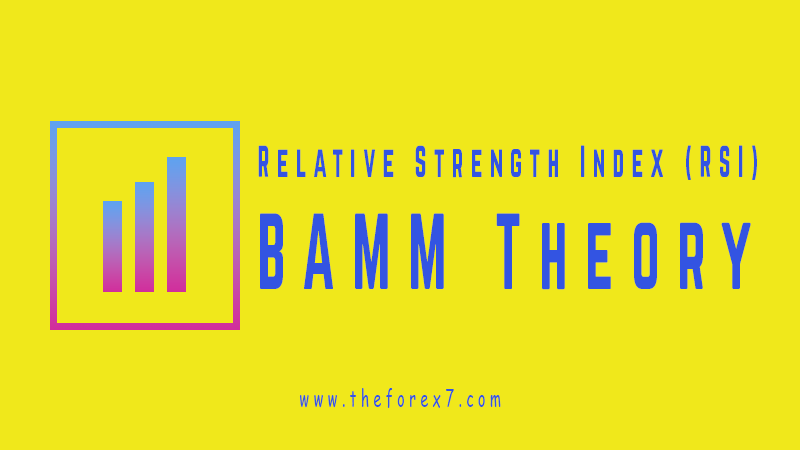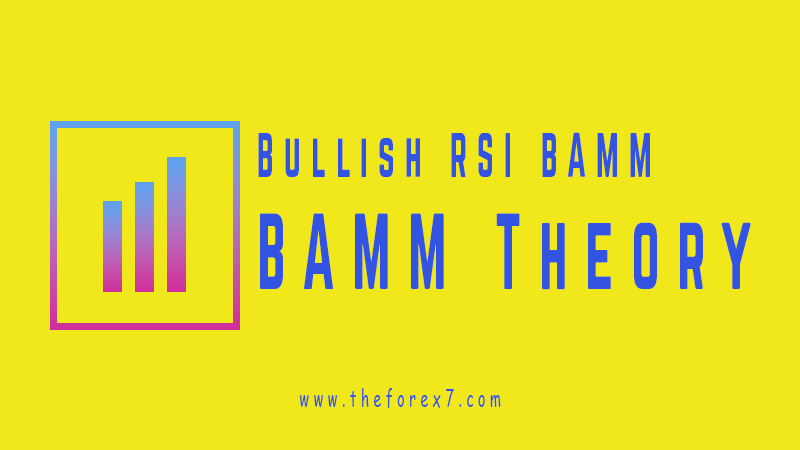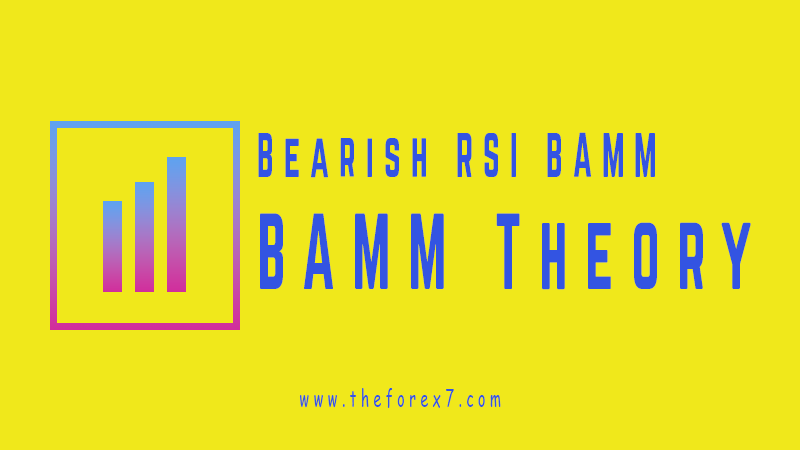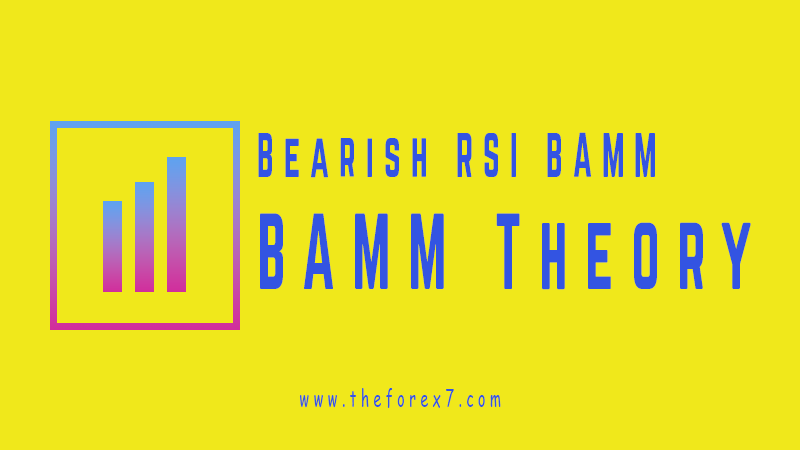Relative Strength Index (RSI): BAMM Theory
Define RSI BAMM, Define RSI : Relative Strength Index, technical indicators in RSI, Divergence in RSI
Course: [ HARMONIC TRADING : Chapter 6: RSI : Relative Strength Index (RSI): BAMM Theory ]

Larger trend considerations such as these were not the only new factors that helped determine the overall bias during these challenging bear markets. Other technical measures such as Relative Strength helped to confirm the extent of the predominant trend.
RSI BAMM
As
the bear markets of 2000 and 2008 demonstrated, the need for strategies that
determine the overall bias is essential to develop a relative perspective on
the position of any trade. For example, there is a significant difference
between a long position, representing a continuation of the predominant bullish
trend, as opposed to a brief correction within the overall downtrend. Despite
the prevalence of distinct patterns that favor one side of the market or the
other, the larger time frame and predominant trend will always dictate the
extent of any move and the possibility for profit.
TECHNICAL INDICATORS
Larger
trend considerations such as these were not the only new factors that helped
determine the overall bias during these challenging bear markets. Other
technical measures such as Relative Strength helped to confirm the extent of
the predominant trend. Furthermore, these considerations have become
increasingly more vital to the Harmonic Trading approach and in the
determination of the overall validity of patterns as reliable structural
signals.
Although
indicators were not new to my analysis, as I frequently employed these studies
and others such as Volume and Price Gap strategies, I must admit that I was not
always as open- minded regarding their importance. When I initially started to
define the Harmonic Trading approach, I employed simple trend lines, Volume,
and a few other technical studies to complement my existing price pattern
analysis. The main focus of this approach was always on the completion of price
patterns. As I examined other complementary strategies to filter the pattern
completions, I realized that indicators and oscillators provided significant
technical signals that helped gauge the overall state of the price action.
Actually,
I first discussed the dynamics of harmonic price action as it relates to the
Trend, Volume, and Price Gap studies in The Harmonic Trader. In this book, I
outlined trading strategies that analyzed patterns within the context of
well-established trend channels, as well. In recent years, I investigated a
variety of technical indicators, including Stochastics, Volatility Bands, MACD,
and Relative Strength. Of all these measures, I have been looking for the
technical measure that would reveal the extent of buying and selling relative
to the predominant trend. Since price patterns often represent the structural
end of a significant trend, it seems that it is most important to understand
some type of relative measure that manifests the degree of buying and selling
at critical harmonic areas. Although many technical indicators were
advantageous in my research, within the framework of this approach, certain
measures offered more relevant and reliable predictive information. From a
harmonic pattern perspective, the structure is as important as where it
completes relative to its prior price history. Therefore, the importance of the
relative structural alignment led me to the Relative Strength Index (RSI),
which provided that measure.
The
integration of other technical studies, in particular RSI, was a significant
evolution in my research. As a dedicated student of the financial markets, I
have always believed it is important to embrace a gamut of market strategies to
thoroughly understand market price action. Considering a variety of technical
methods can provide greater confirmation of potential price action.
In
fact, H. M. Gartley in his infamous book Profits in the Stock Market,
emphasized such multiple confirmation strategies of technical methods, stating:
“Patterns must be used in conjunction with other technical working tools. The study of tops and bottoms, to be of greatest value, must be combined, and used in conjunction with the study of other working tools, such as Trend Lines, Moving Averages, Gaps, and particularly Volume, as well as Dow Theory and the general market phenomena which we call ‘Breadth-of-the-Market’ studies.”
The
evolution of the Harmonic Trading approach has led to a more integrative
perspective that is congruent with Gartley’s philosophy. Patterns—in this case,
harmonic patterns—must be used in conjunction with other technical working
tools. Of the vast array of indicators and oscillators available that I have
researched, RSI represents the most effective measure in relation to the
completion of harmonic patterns.
Although
when talking about Relative Strength, sometimes people confuse the subject as
relative to another index, such as the S&P 500. In this case, I’m talking
about the Relative Strength measure that calculates the internal change of
price movement, usually comparing the current price history with that of an
average of a certain number of periods prior. (Typically, a 14-period average
is calculated.) The readings of RSI measurements exhibit a number of unique
technical traits in their own merit. For example, patterns that complete at
extreme RSI readings can help to identify those special situations where the
impending reversal signals the end of an extended trend. In many instances, I
have noticed RSI readings that have formed similar complex structures in setups
that possessed distinct price patterns. Even more compelling were situations
where a Bearish Gartley, for instance, would develop on the price chart, while an
indicator reading was showing a Bearish Three Drives structure. Both the price
and the indicator reading structures completed at the same point within their
own relative chart, serving to confirm the reversal. These are a few of the
many distinct relationships that help to decipher price action within the
context of harmonic price patterns. Furthermore, these unique phenomena can
pinpoint the most critical turning points in the markets. Regardless of these
obvious relationships, I was still looking for those exact situations where the
dynamics of harmonic price patterns and technical indicators identified unique
Potential Reversal Zones (PRZ).
RELATIVE STRENGTH INDEX (RSI)
The
RSI was discovered by Welles Wilder in the 1970s. Wilder introduced RSI in his
book New Concepts in Technical Trading Systems. In addition to the RSI
technique, he introduced several other indicator and oscillator studies,
including the Directional Movement Index (DMI). He presented a variety of
unprecedented technical measurement strategies, but RSI is among his finest
contributions to the field of Technical Analysis. Although it is properly
categorized as a momentum oscillator, RSI is typically considered one of the
more popular indicator studies available today.
The
RSI was devised by Wilder as a means of calculating the change in momentum of
price movement as it relates to a predetermined time period. The name Relative
Strength Index is slightly misleading, as the RSI does not compare the relative
strength of two markets, but rather the internal strength of the price action
of an individual issue.
RSI is a price-following oscillator that ranges between 0 and 100. The RSI typically peaks above 70 and bottoms below 30, and it usually forms these readings before the underlying price chart. The RSI equation is derived by calculating the ratio of the average of X (number) price bars (days) day’s closes up divided by the average of X (number) price bars (days) day’s closes down. Although “X” can be any value, Wilder employed a 14-period factor in his computation. The equation is calculated as follows:
This
equation quantifies the relative momentum of the current price action with that
of 14 (X) periods ago. The extreme RSI readings provide excellent measures to
the degree that the price action has persisted and the continued strength or
momentum of the predominant trend. The true value of these readings occurs when
the price and the indicator react at extreme areas. When the RSI tests an
extreme overbought or oversold area at critical harmonic levels of support or
resistance, the price action can reveal a great deal regarding the potential
state of the predominant trend.
DIVERGENCE
The
benefit of the RSI is most advantageous when compared to clear areas of support
and resistance. The key technical event occurs when the price and the RSI
diverge. In fact, in his book New Concepts, Wilder emphasized the importance of
divergence:
“Although divergence does not occur at every turning point, it does occur at most significant turning points. When divergence begins to show up after a good directional move, this is a very strong indication that a turning point is near. Divergence is the single most indicative characteristic of the Relative Strength Index.”
I
agree with Wilder. In fact, I believe that the RSI is the most reliable
technical reading to reveal such divergence as it directly relates to price.
Furthermore, the technical phenomenon of RSI divergence is particularly
revealing when related to the completion of harmonic patterns.
As
my research continued to explore this technical phenomenon further, I soon
realized that the various RSI readings could be differentiated in much the same
manner as harmonic patterns. I was able to define different types of extreme
RSI readings and categorize these structures accordingly. This experimentation
yielded significant technical information and helped to validate harmonic
setups immensely.
RSI + BAMM = RSI BAMM
When
applied to indicator readings, the BAMM concept differentiated various structures,
especially in the extreme overbought and oversold RSI zones. The differentiated
RSI readings at the completion of distinct harmonic patterns confirmed
reversals and the overall validity of the setup in an unprecedented manner.
Although
the BAMM principles could be applied to many technical studies, Relative
Strength readings formed more distinct structures than any other indicator and
provided the most reliable information in these divergent situations. As I
continued to investigate the effectiveness of this strategy, one divergent
technical situation, in particular, that I discovered worked unbelievably well
within the Harmonic Trading approach.
RSI BAMM
The
RSI BAMM is a method that examines the state of the indicator before
considering the structure of the price action. As is the case with harmonic
patterns, the RSI BAMM requires specific conditions to be met to validate a
trade opportunity. Regardless of the extent of any price move or the structure
that it forms, the RSI BAMM requires that a mandatory reading in the extreme
overbought or oversold area occur to initiate the setup.
This
condition creates an inherent problem within the Harmonic Trading approach,
since the setup is dependent upon the RSI reading and not the price structure.
For example, there are many instances where an extended predominant trend will
seem to go on forever. Price action that enjoys a rally for quite some time may
seem to never stop. Frequently, such well- established trends trade quite
nicely within an upward sloping range and seem to be invincible. These
situations can lull a trader into a complacent mindset, believing that the
rally will last forever. However, the RSI reading can paint a different picture
by assessing the relative extent of the price action. In other words, the RSI
reading can indicate the degree of buying that has occurred. Although the RSI
is an early signal, an extreme reading can serve as a potential warning sign of
an impending reversal. When compared to the price action, clear areas of divergence
can be defined.
I
would like to take a moment and comment on a common misconception regarding
indicators as a stand-alone technique for trading the markets. Many critics in
the past have argued against the effectiveness of the RSI to be a reliable market
signal. Some have argued that RSI does not possess credible technical
information due to the fact that price action does not follow any consistent
and predictable pattern following an extreme reading. Such universal
application is not realistic, as anyone who really understands Technical
Analysis knows this is not the proper analysis of such measures. All methods
must be compared, contrasted, and analyzed with other approaches to determine
the aggregate information provided from the price action. Whether to use trend
lines, Stochastics, Candlestick reversal patterns, or any other method, it is
imperative to have confirmation of multiple approaches to yield the most
pertinent information for the best technical decision regarding any trade. In
fact, in his book New Concepts, Wilder emphasized the importance of divergence:
“The Relative Strength Index, used in conjunction with a bar chart, can provide a new dimension of interpretation for the chart reader. No single tool, method, or system is going to produce the right answers 100% of the time. A successful trader utilizes several different kinds of input into his decisions.”
A UNIQUE TECHNICAL SITUATION
Although
the RSI BAMM involves many steps to validate this technical phenomenon and it
might seem complex first, it is important to understand that this is truly a
unique technical situation. The RSI BAMM is an advanced divergent condition
where the RSI readings and harmonic pattern completions define extremely
accurate technical levels and decipher the predominant trend in an
unprecedented fashion. Although this advanced application of the basic tool
that Welles Wilder developed decades ago does not appear in every market all of
the time, when these conditions are present, the RSI BAMM is extremely accurate
in defining precise levels of harmonic support and resistance. Furthermore,
this technique quantifies the “indicative
characteristic” of divergence in a manner that I believe even Wilder would
find interesting.
I
have accumulated a great deal of research on the various applications of the
RSI. Starting with Wilder’s original work and examining a variety of other
material, I believe that the RSI BAMM is an unprecedented application of this
technical tool. Although many of the strategies do include some of the simple
concepts involved within the Wilder’s original application—such as divergence,
confirmation, and basic measurement techniques—the advanced application of the
RSI with harmonic patterns represents uncharted territory for the Harmonic
Trading approach, and for that matter, Technical Analysis.
The
simple integration of the RSI represents a dramatic shift in the Harmonic
Trading approach. Although the RSI BAMM may seem to stray from the principles
of this methodology, the integration of the RSI adheres to the basic tenets of
the Harmonic Trading approach. Fibonacci measurement techniques and pattern
recognition strategies are still the primary basis that differentiate each
situation and define the potential opportunity. I suggest to thoroughly study
all aspects of this new strategy before attempting to implement it into real
trading situations. Although the RSI BAMM requires many technical conditions to
be met, pattern completions within this framework provide the significant trade
signals and accurate evidence of the probable future price action well in
advance.
HARMONIC TRADING : Chapter 6: RSI : Relative Strength Index (RSI): BAMM Theory : Tag: Harmonic Trading, Stock Market : Define RSI BAMM, Define RSI : Relative Strength Index, technical indicators in RSI, Divergence in RSI - Relative Strength Index (RSI): BAMM Theory




